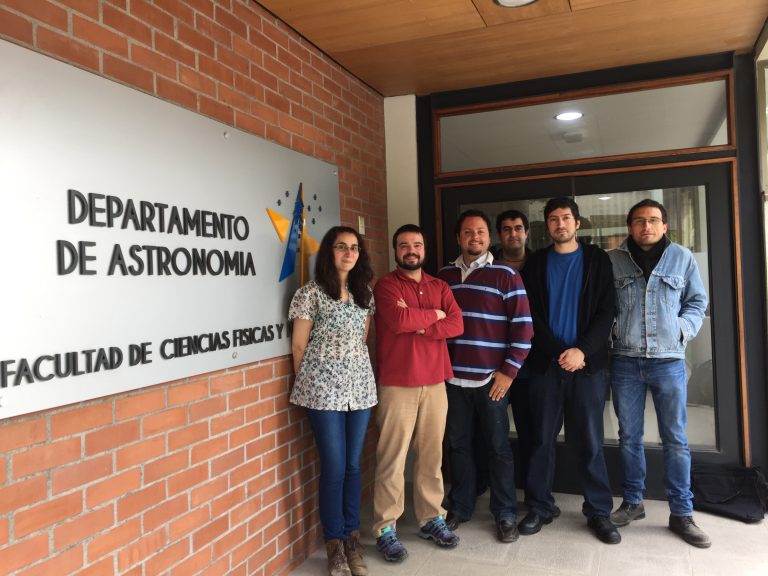Galaxy evolution and galaxy environments

Our group —The Galaxy and Large Scale Structure evolution (GaLSSev)— part of the Department of Astronomy of the Universidad de Concepción (UdeC), is dedicated to the study of galaxy properties and the formation and evolution of galaxies as a function of the local environment in which they reside. Within this context, we focus our observations on galaxies in galaxy clusters and galaxy groups, the mass overdensities that delineate the filamentary distribution of matter in the universe. Clusters of galaxies are the most massive, gravitationally-bound structures known, and ideal laboratories to study the environmental processes that shape the galaxies we observe in the local universe. Those processes must be at the origin of some of the most prominent characteristics of clusters: the morphology-density relation and the red-sequence of galaxies in color-magnitude space. These relationships are the manifestation of the morphological changes of galaxies and the quenching of their star formation activity. Galaxy-galaxy and galaxy-intracluster medium interactions certainly play a role in that evolution, however, the details of where and when such transformations take place and which one dominates are still poorly understood. A significant progress in this line of research, to answer some of the outstanding questions regarding galaxy evolution, requires the use of state-of-the-art facilities equipped with the most advanced and versatile set of instruments, which our group has access to.
Our team uses panchromatic, spectrophotometric data obtained with ground- and space-based observatories such as the VLT, Magellan, Gemini, ALMA, HST, and Spitzer, to name some. With these data, we are able to obtain redshifts, magnitudes, colors, line indices, and other relevant information for galaxies to characterize in the best possible way their properties, such as the stellar and gas mass content, stellar population mix, metal abundances, average ages, and star formation histories, among others. We can also characterize their environment by estimating local densities, the amount of substructure, and the overall dynamical state and dark matter content of the structure under consideration.

The GaLSSev team in Concepción is led by Dr. Ricardo Demarco, and currently includes Dr. Rodrigo Herrera-Camus, Dr. Nathan Leigh, Dr. Neil Nagar, Dr. Pierluigi Cerulo, Dr. Guillermo Cabrera, Dr. Daniela Olave-Rojas, Ms. Marcela Gonzalez (M.S. student), Ms. Camila Cid (M.S. Student), Mr. Caleb Gatica (M.S. student), Ms. Katherine Enríquez (M.S. student), Ms. Camila Sepúlveda (M.S. student), Ms. Andrea Guerrero (M.S. student), Mr. Felipe Sepúlveda (M.S. student), Mr. Alex Pillard (M.S. student), and Ms. Maria José Merino (B.Sc.). GaLSSev is part of GaTOS, a larger Chilean collaboration dedicated to the study of galaxy evolution in overdense systems through theory and observations. We are also part of a collaboration with computer scientists and engineers to develop advanced computing techniques that can be applied to large data sets to study galaxy formation and evolution. Moreover, members of GaLSSev are active participants in major international collaborations with colleagues from the U.S.A., Canada, Europe and Australia. For more information, please visit: http://www.astro-udec.cl/rdemarco/En/science_team.html





